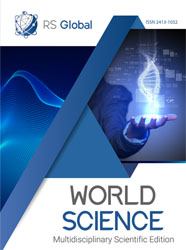ЦЕННОСТНЫЕ ОСНОВЫ КАЗАХСТАНСКОЙ МОДЕЛИ ОБЩЕСТВЕННОГО СОГЛАСИЯ И НАЦИОНАЛЬНОГО ЕДИНСТВА
Abstract
The Republic of Kazakhstan is a multi-ethnic state, which is home to more than 100 ethnic groups and more than 20 confessions. The study of the main directions of the state ethnic policy of Kazakhstan, the formation of a model of social development, the study of value potential, as well as the identification of new trends consolidating society, is an urgent task for scientists and researchers not only from Kazakhstan, but also from other countries. The article focuses on the modern agenda, the study and development of eth-no-political processes in the country and the world, models of national policy of different countries, its fun-damental and value bases. For Kazakhstan's society, the key role in maintaining stability, strengthening na-tional unity and public agreement is played by the Assembly of people of Kazakhstan, which is a unique socio-political institution with a constitutional status clearly defined by legislative regulation.
References
Сахарова В.В. Мультикультурализм и политика интеграции иммигрантов: сравнительный анализ опыта ведущих стран Запада. – СПб.: Златоуст, 2011 – 176 с.
Кошелев Л.В., Тишков В.А. История Канады. – М., 1982.
Калашникова Н.П. Казахстанская модель общественного согласия и общенационального единства: история формирования и новые тренды ее модернизации (основные пролегомены исследования). – Нур-Султан, 2019. – 28 с.
Политика и практика меньшинств Китая. –URL: https://www.fmprc.gov.cn/ce/cohk/chn/xwfb/zfbps/t55528.htm [дата обращения: 06.12.2019]
Искакова Ж.А. Государственная семейная политика Казахстана: анализ текущего состояния и тенденции развития [Текст] / Ж.А. Искакова // Казахстан-Спектр. – 2019. - №4. – С. 2007. - № 4. – С. 76 – 84.
Якушева Ю.В. Динамика межэтнических отношений в Республике Казахстан (1991-2010 гг.). дисс. к.и.н. - Москва, 2015.
Views:
292
Downloads:
253
Copyright (c) 2019 The authors

This work is licensed under a Creative Commons Attribution 4.0 International License.
All articles are published in open-access and licensed under a Creative Commons Attribution 4.0 International License (CC BY 4.0). Hence, authors retain copyright to the content of the articles.
CC BY 4.0 License allows content to be copied, adapted, displayed, distributed, re-published or otherwise re-used for any purpose including for adaptation and commercial use provided the content is attributed.











